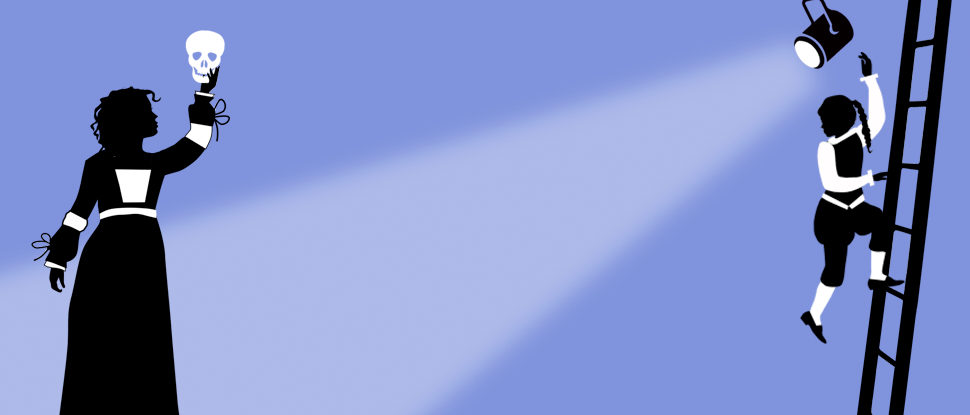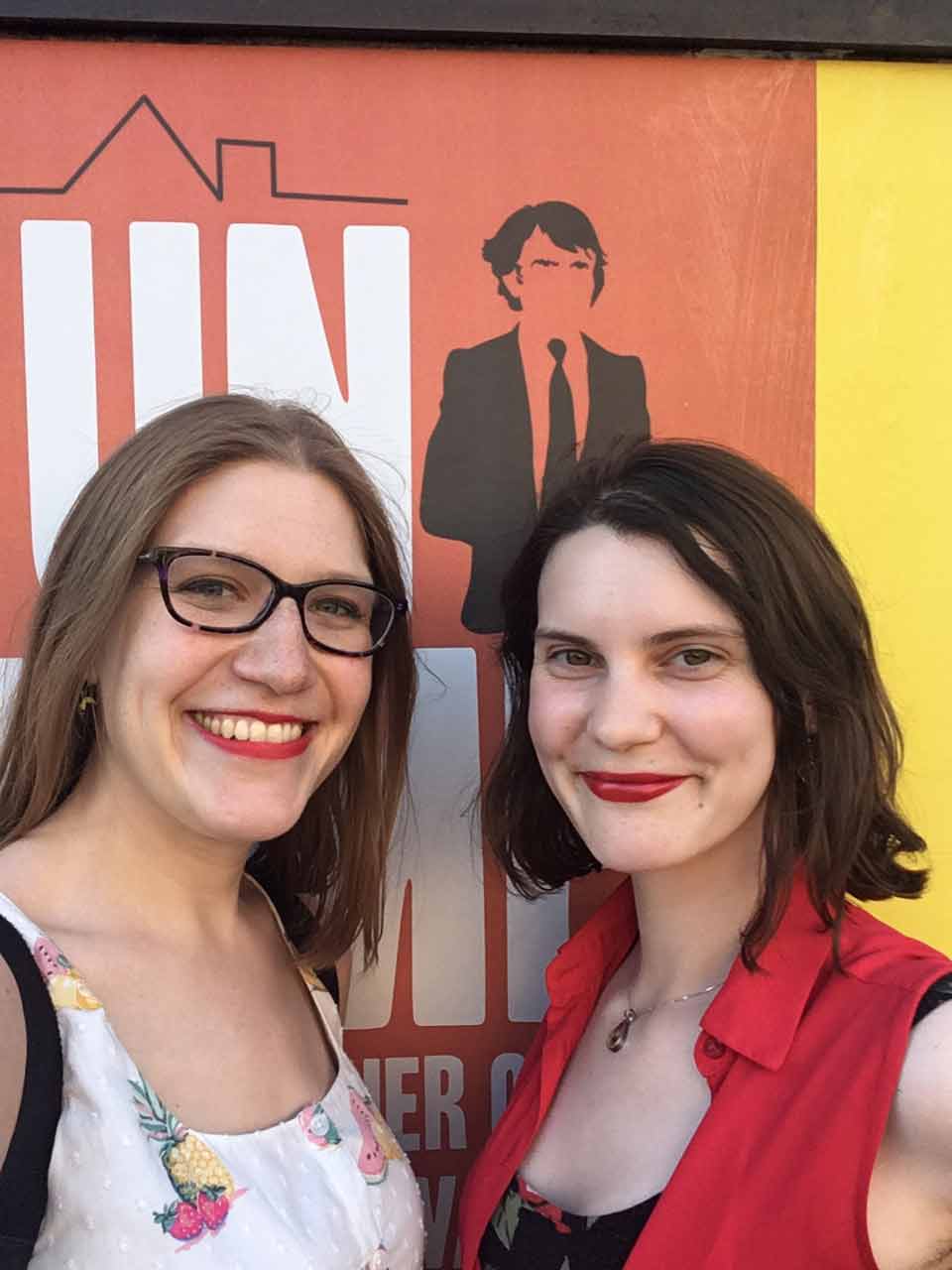- Home |
- Search Results |
- Robin Stevens: ‘It matters desperately to me that Daisy is queer’
Robin Stevens: ‘It matters desperately to me that Daisy is queer’
Avid Murder Most Unladylike fans will already know that in Death in the Spotlight Detective Daisy Wells has her first crush – and it’s on a girl. Here, Robin reveals what it meant to her to write a gay character, while Pride in Publishing’s Charlie Morris, LGBTQ+ activist, describes what this moment means for queer readers everywhere.

Robin Stevens:
'When I create a character, I spend some time thinking about things the outside world will see – their age, race, and nationality, for example - but much longer trying to work out what they’re like inside. Are they thoughtful or quick to judge, clever or foolish, angry or calm – and why? What makes them tick, what would they carry out of a burning building, who is their favourite person in the whole world?
I do this for each new character I create in my Murder Most Unladylike series – but of course, there are two characters who appear in every book I write, who I now know almost as well as I know myself. Daisy and Hazel have lived in my head for eight years, and they have grown up with me. They’ve done it much more slowly than I have – I was 22 when they were 13, but now I’m 30 and they are still turning 15. All the same, though, they are older than they used to be, and as well as solving murders they are coping with all the heartbreak and confusion and passion that comes with being teenagers.
Hazel is a person who is very fond of falling in love, but quite bad at choosing the right people to fall in love with – she has been in agonies over her friend Alexander since Jolly Foul Play. Daisy, though, has never shown much interest in romance. She’s been very rude about Hazel’s crushes, and about boys in general – and although this may have seemed just like Daisy being Daisy, there’s a specific reason for that. I know what’s going on in Daisy’s head, and I have known since I wrote the second book in my series, Arsenic for Tea, that if Daisy was to ever fall in love, she’d fall for a girl, not a boy.
'It matters desperately to me that Daisy, like many of my favourite people and some of my most loyal readers, is queer, and I wanted to make sure that I got the announcement of that fact right'
I’ve left plenty of hints through the books for thoughtful readers to pick up on, but as I have carried on the series I have realised that hints are not enough. What an author imagines about a character isn’t canon until it appears on the page of one of their books.
And finally, in Death in the Spotlight – the seventh murder mystery in the series - the moment felt right. Daisy falls hard for one of the suspects in the mystery, a girl called Martita who’s part of the Rue Theatre’s cast. She might be a murderer, which makes Daisy even more fascinated with her – but, Daisy being Daisy, she’s determined to prove that the person she loves is innocent.
I often get emotional when I’m writing, but the scene in which Daisy finally admits how she feels about Martita to Hazel was one of the most emotional things I’ve ever written – I actually cried when I wrote it. It felt like the culmination of a plot I’d had in my head for years, a moment where Daisy can be more honest than she ever has before to her very best friend (she hates being honest, so it always matters more when she is).
'I feel fiercely protective of all my characters and my books, but this has been one of the most nerve-wracking stories to publish. Would readers accept Daisy as readily as Hazel does? What would I do if they didn’t?'
It matters desperately to me that Daisy, like many of my favourite people and some of my most loyal readers, is queer, and I wanted to make sure that I got the announcement of that fact right. I wanted Daisy to say the words in her own unique style, to show the reader – and Hazel – that nothing about Daisy has changed. She is still the same stubborn, haughty, fiercely self-confident girl we have all loved (and been annoyed by) for seven books. We just know a little bit more about her now. I also wanted Hazel’s response to be as warm and loyal as she is. Her support means everything to Daisy, and while I’ve always known that Hazel wouldn’t be in the slightest bit bothered by Daisy’s revelation, writing it down made that real.
I knew that this scene would be incredibly important, and I asked my friend Charlie Morris, a long-term fan and LGBTQ+ activist, to read what I’d written, to make sure that the scene did everything I wanted it to.

I feel fiercely protective of all of my characters and my books, but this has been one of the most nerve-wracking stories to publish. Would readers accept Daisy as readily as Hazel does? What would I do if they didn’t?
But it turned out that I needn’t have worried. In the month since Death in the Spotlight (and Daisy) came out, my social media accounts have been flooded with messages of support. Queer readers of all ages are suddenly able to see themselves in Daisy in a way they never expected, and I’ve been overwhelmed to realise, once again, how much representation matters. There aren’t that many people like Daisy in children’s literature, and that’s a pity, because children need to read about people like her whether or not they’re queer themselves. It matters to the children whose friends will come out to them, and it matters even more to the children who will come out themselves. During one of the events on my Death in the Spotlight tour, a little girl in my signing queue leant over to me, her face glowing, and whispered, ‘I just wanted to say, thank you so much for Daisy and Martita.’ And that, as far as I’m concerned, justifies everything.’
Charlie Morris:
‘When Robin asked me to read an early draft of Death In The Spotlight, I was thrilled. I’ve known Robin for years and have been reading the series since Murder Most Unladylike was first published. Whilst I first related to Hazel’s shy awkwardness and hesitant, thoughtful disposition, it soon became apparent that there was something interesting happening with Daisy’s character. I began to wonder … is she like me?
I count myself lucky to have had the chance to follow the girls through Robin’s storytelling, talking about them with her as they grow up in her imagination, and seeing them become more confident in themselves on the page. I knew that this book was going to be a pivotal moment in Daisy’s life, and to be asked to give a bit of insight into what she might be going through was an honour.
'The hints that Robin has peppered through her stories about Daisy’s sexuality have been fun to spot'
There are a lot of potential pitfalls when you write about characters who are confined to the plot structure of a murder mystery. Someone must die, someone must be to blame. And for LGBTQ+ readers, so used to seeing queer characters killed off in books and TV shows, there is always an extra edge of nervousness. If I invest myself in this character, will they suffer, will their heartache be exploited? The lack of middle-grade representation for young queer people makes this all the harder. We’re flung straight into the maturity of young adult and adult characters. There are few cultural references for our learning curves, our gentle steps into realisation. Where are the stories that reassure us that we queer readers will be OK in the end (even when there’s a murderer on the loose!)? Using a fresh pair of eyes and a new perspective, Robin and I worked to make sure the story didn't fall into these traps.
Providing feedback on an early draft means looking at characters’ actions and asking questions about them – in my case, I had to decide whether Daisy’s behaviour sits right with what I would want for her as a queer person. The thing that was most important to me was to ensure that Daisy would have agency over when she gets to come out. So, although Hazel begins to suspect early in the book that Daisy’s interest in Martita is more than her usual detached and methodical approach to crime-solving, and might in fact indicate deeper feelings, it is still Daisy’s choice to put her trust in Hazel and to say the words herself.
'The importance of role models for the young queer community cannot be overstated, and is something that is not shown enough'
Robin’s books have many fantastic things about them, but a particularly striking element of Death in the Spotlight is that, as well as having a significant queer main character, that character is not isolated. Daisy gets to see multiple examples of adults and peers, like Miss Crompton and her partner, living fully formed, complex, emotional queer lives. The importance of role models for the young queer community cannot be overstated, and is something that is not shown enough.
The hints that Robin has peppered through her stories about Daisy’s sexuality have been fun to spot. In previous books, Daisy’s hero worship has focused on the Big Girls she admires at school, teachers, and young women that demand respect. It is in Death in the Spotlight where these hints blossom into something more. Reading the first draft meant I got to help Robin paint a more colourful picture. I suggested moments where she’d be distracted by Martita, moments that might cause her pause, distress or simple admiration. I helped give Daisy the chance to have butterflies, and become the worried young romantic she’s so scorned in others.
Our young readers are keen to see themselves and their peers in the stories that they read. They’re perceptive, curious, interested, open-minded and they want to understand and be understood. In Death in The Spotlight, Robin has given her readers the power to say, without question, that Daisy is queer, and that her friend Hazel supports her and loves her no matter what. Daisy gets to say the words, gets to feel what she feels for Martita, and gets to experience the first flutters of love, just as any other young character growing up would do. Robin said she cried when she wrote the scene, and I cried when reading it, because finally, a much-loved character gets to be strong-willed, fiercely intelligent, independent and yet also a child, figuring herself out, and realising she is gay. And that’s wonderful.’